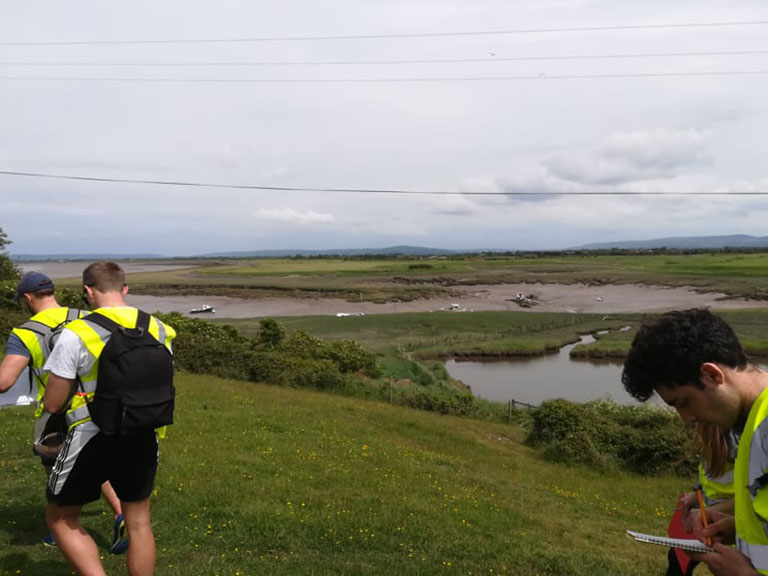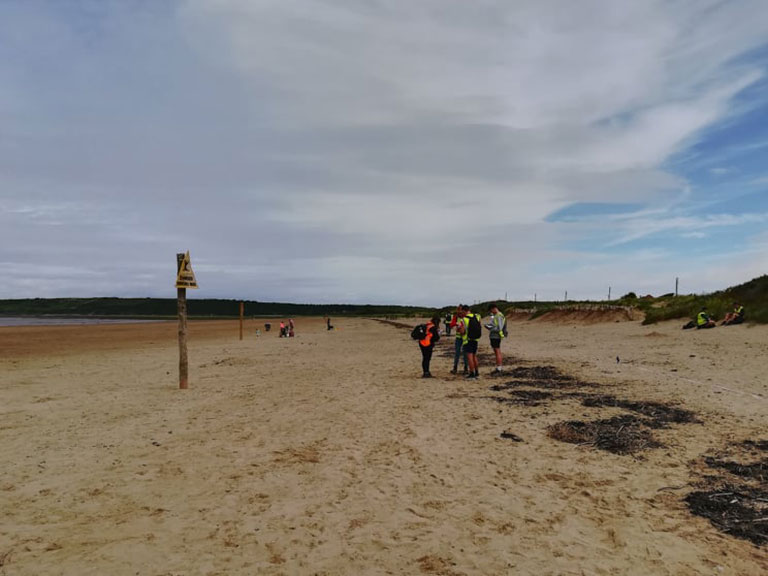Language: English | Cymraeg
Severn Estuary Field Research and Monitoring Pathway Action Plan
Field research and monitoring in the Severn Estuary are essential for understanding its biodiversity and environmental changes. However, these activities can inadvertently spread invasive non-native species (INNS) if proper biosecurity protocols are not followed. Research teams moving between different locations may unknowingly carry INNS via their equipment and activities. Kit and equipment can harbour microscopic organisms, animals (as eggs and in their larval, juvenile and adult life stages) and seaweed (as fragments or spores) which are not always visible to the naked eye.
Key vectors include:
- Equipment transfer: Sampling gear, such as nets, traps, and sediment cores, can carry INNS if not thoroughly cleaned and dried between sites. Damp or dirty equipment provides an ideal environment for invasive non-native species to survive and spread.
- Boat use: Research vessels can transport INNS on hulls, in ballast water, or within compartments. Fouling organisms attached to boats may spread to new areas when vessels move between sites.
- Personnel and clothing: Wet suits, boots, and other gear can retain water or biological material, which may harbour INNS. Without proper cleaning, these items can introduce INNS to new areas.
- Sediment and water samples: Improper handling of samples can accidentally release INNS back into the environment or lab settings. Samples should be securely contained and safely disposed of.
To reduce these risks, research teams should follow strict biosecurity protocols, including thorough cleaning and drying of equipment, proper boat maintenance, and careful handling of samples.
Relevant stakeholders for this action plan include Nature Conservation Bodies, Academic and Research Institutions, Conservation and eNGOs and Citizen Science Initiatives.

(Photo credit Cardiff University)

(Photo credit Cardiff University)
Severn Estuary Field Research and Monitoring Pathway Action Plan
| Action number | Action | Links |
|---|---|---|
| 6.1 | Endorse this plan and promote the uptake of actions contained within this plan across your sector. | |
| 6.2 | Nominate a biosecurity lead in your organisation/group. Encourage them to educate staff and customers about marine invasive non-native species using the resources available on these biosecurity pages. | |
| 6.3 | Ask the biosecurity lead to report species on iRecord. If you do not recognise the species, send a photo to your local records centre. | IRecord Local Records Centres (ALERC) |
| 6.4 | Educate staff, customers and contractors by including information on marine invasive non-native species and biosecurity in your existing print and online media such as guides and websites. | |
| 6.5 | Complete a biosecurity risk assessment for activities taking place on the coast and ensure any risks are suitably mitigated. | |
| 6.6 | A biosecurity plan may be requested as part of a marine licence application. Please use the resources section for guidance. | |
| 6.7 | Ensure all kit and apparatus is Checked, Cleaned and Dried following best practice after every use. | Check, Clean, Dry for Field Workers (NNSS) |
| 6.8 | Ensure any research facilities are bio-secure before carrying out any work. |
 Severn Estuary Partnership
Severn Estuary Partnership